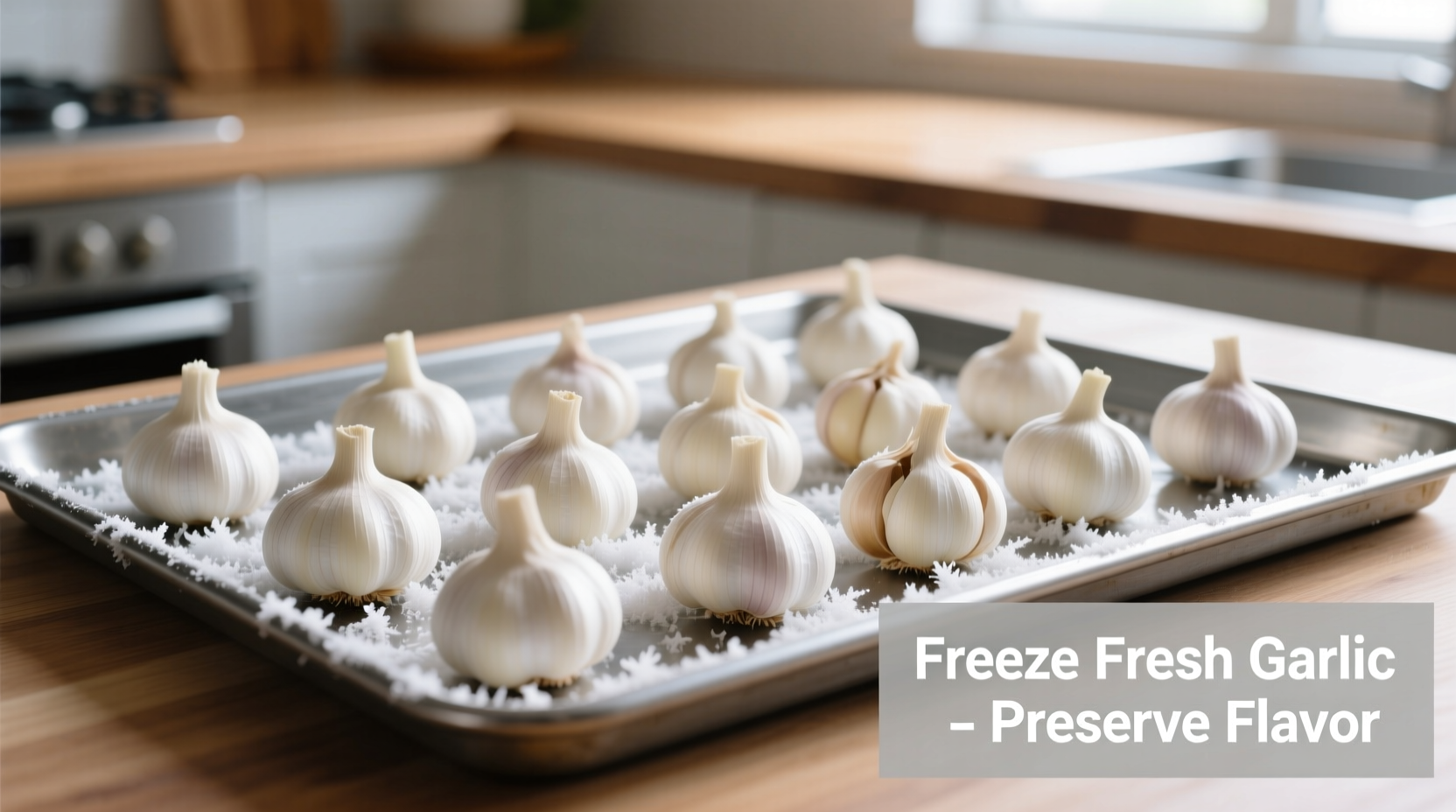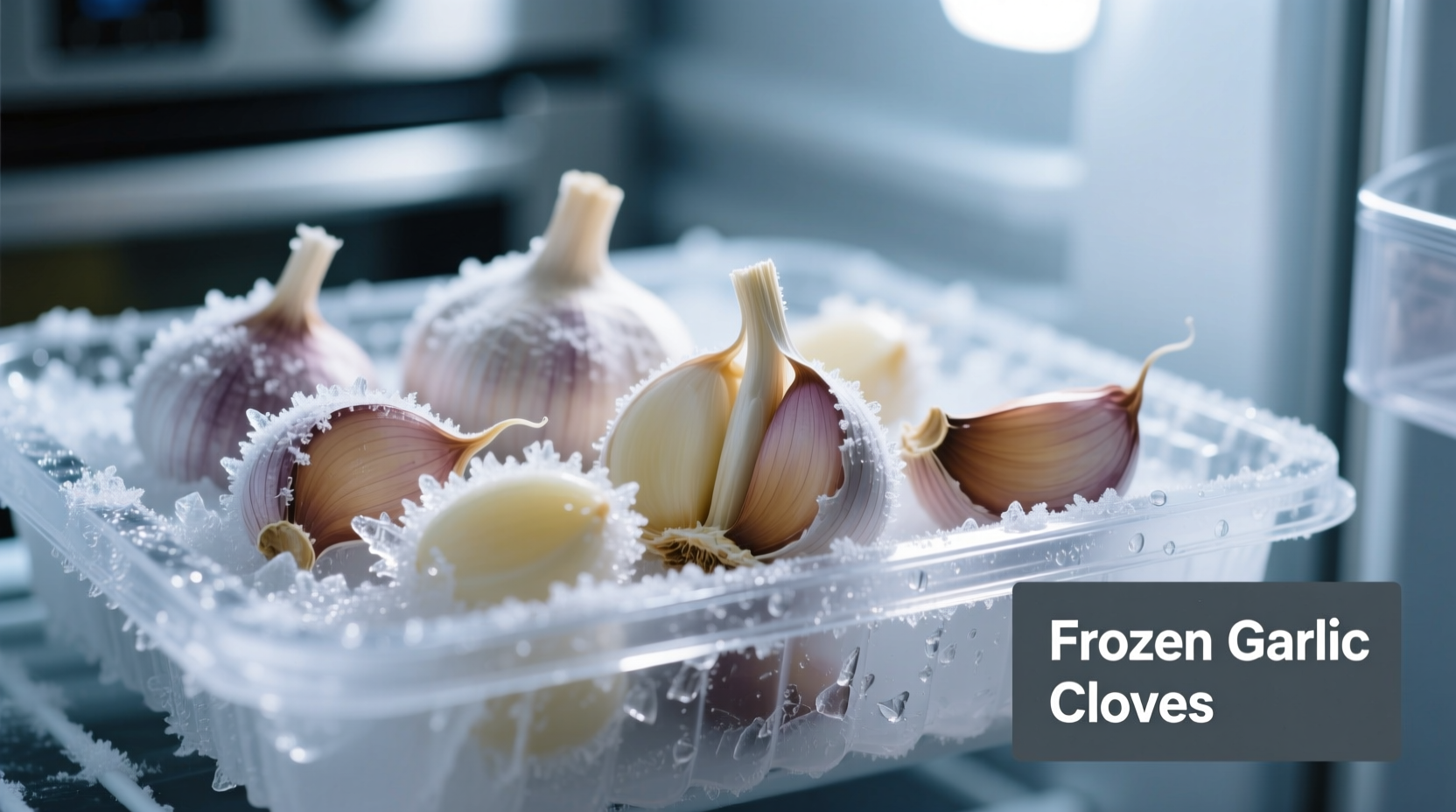Preserving garlic through freezing offers home cooks a practical solution for reducing food waste while maintaining culinary quality. Unlike many preservation methods that compromise garlic's complex flavor profile, proper freezing techniques retain the essential compounds responsible for both taste and health benefits. This guide reveals professional methods backed by food science research to maximize your garlic preservation success.
Why Freezing Preserves Garlic Better Than You Think
Garlic's signature flavor comes from allicin, a compound formed when cloves are cut or crushed. Contrary to popular belief, freezing doesn't destroy allicin but temporarily stabilizes it. When frozen garlic thaws during cooking, allicin reactivates, delivering nearly identical flavor to fresh garlic according to research from the National Center for Home Food Preservation.
The University of Minnesota Extension confirms that properly frozen garlic maintains 90% of its original flavor compounds for up to one year when stored at consistent freezer temperatures. This makes freezing superior to drying for preserving garlic's characteristic pungency and culinary versatility.
Selecting and Preparing Garlic for Optimal Freezing
Start with firm, plump cloves showing no signs of sprouting or soft spots. The University of Alaska Fairbanks Cooperative Extension recommends using freshly harvested garlic within 2-3 weeks of purchase for best freezing results. Avoid pre-peeled commercial garlic, which often contains preservatives that affect freezing quality.
For efficient peeling, try the shake method: place cloves in a sealed container and shake vigorously for 30 seconds. This separates skins from cloves with minimal damage. Rinse peeled cloves briefly in cold water and pat completely dry with paper towels—any moisture causes freezer burn.
Four Professional Freezing Methods Compared
| Method | Best For | Shelf Life | Flavor Retention | Prep Time |
|---|---|---|---|---|
| Flash-frozen cloves | Whole cloves in recipes | 12 months | 95% | 20 minutes |
| Minced in oil | Immediate cooking use | 4 months | 90% | 15 minutes |
| Garlic paste cubes | Precise measurements | 6 months | 85% | 25 minutes |
| Roasted frozen | Mellow flavor profiles | 8 months | 80% | 50 minutes |
Flash-Freezing Technique: The Professional's Choice
Professional chefs prefer flash-freezing for maximum versatility. Arrange peeled cloves in a single layer on a parchment-lined baking sheet, ensuring they don't touch. Freeze for 2 hours until solid, then transfer to labeled freezer bags or airtight containers. This method prevents cloves from sticking together, allowing you to remove only what you need.
The USDA Food Safety and Inspection Service emphasizes that rapid freezing at 0°F (-18°C) or below creates smaller ice crystals that cause less cellular damage. This preserves texture better than slow freezing in home freezers that fluctuate in temperature.

Using Frozen Garlic in Your Cooking
Don't thaw frozen garlic before use—this causes texture degradation. Instead, add frozen cloves directly to hot oil or cooking liquids. The University of Minnesota notes that frozen garlic actually performs better in sautés because it thaws gradually while cooking, preventing burning.
For recipes requiring minced garlic, frozen cloves can be grated directly from the freezer using a microplane. This technique yields perfect minced garlic without the stickiness of fresh cloves. When making sauces or dressings, frozen garlic paste cubes melt seamlessly into the mixture.
Avoiding Common Freezing Mistakes
Many home cooks make these critical errors that compromise garlic quality:
- Freezing whole bulbs - Moisture trapped between cloves causes spoilage
- Using non-airtight containers - Leads to freezer burn and flavor absorption
- Freezing in water - Dilutes flavor compounds and creates texture issues
- Storing above 0°F - Accelerates quality degradation according to USDA guidelines
For oil-based methods, always freeze garlic-oil mixtures immediately after preparation. The National Center for Home Food Preservation warns that storing garlic in oil at room temperature creates botulism risk, but frozen mixtures remain safe for up to 4 months.
When Freezing Isn't the Best Option
While freezing works well for most applications, certain situations call for alternative preservation:
- Long-term storage beyond 12 months - Consider dehydrating for 2+ year shelf life
- Raw applications like aioli - Fresh garlic provides superior texture
- Specialty varieties like black garlic - Requires specific fermentation processes
The University of Alaska research shows that freezing changes garlic's cellular structure slightly, making it less suitable for applications where raw texture matters. However, for cooked dishes—which represent 95% of garlic usage—frozen garlic performs indistinguishably from fresh.











 浙公网安备
33010002000092号
浙公网安备
33010002000092号 浙B2-20120091-4
浙B2-20120091-4